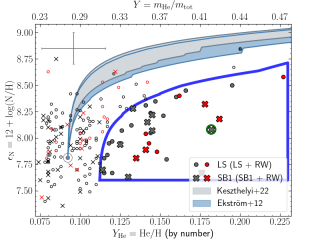Recent observations of the rotation curve of M31 show a rise of the outer part that cannot be understood in terms of standard dark matter models or perturbations of the galactic disk by M31?s satellites. Here, we propose an explanation of this dynamical feature based on the in?uence of the magnetic ?eld within the thin disk. We have considered standard mass models for the luminous mass distribution, a Navarro?Frenk?White model to describe the dark halo, and we have added up the contribution to the rotation curve of a magnetic ?eld in the disk, which is described by an axisymmetric pattern. Our conclusion is that a signi?cant improvement of the ?t in the outer part is obtained when magnetic effects are considered. The best-?t solution requires an amplitude of ?4 ?G with a weak radial dependence between 10 and 38 kpc.
Advertised on
References
(2010) The Astrophysical Journal Letters, Volume 723, Issue 1, pp. L44-L48


